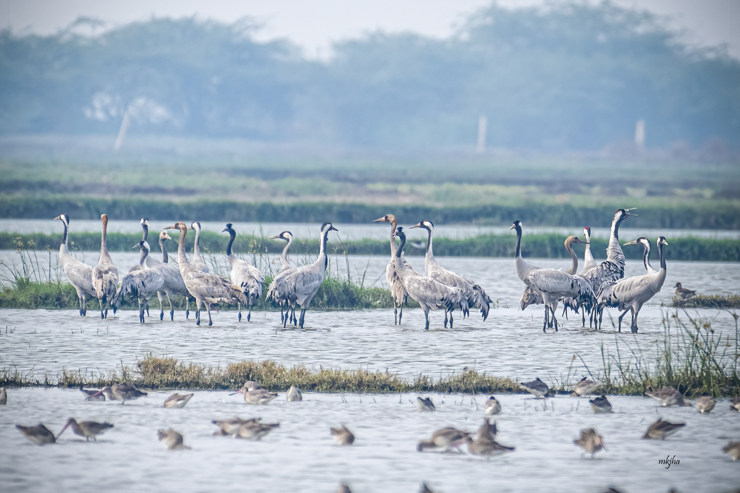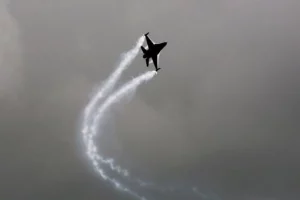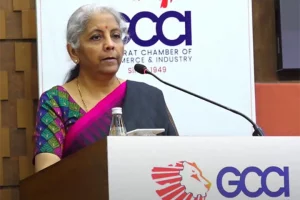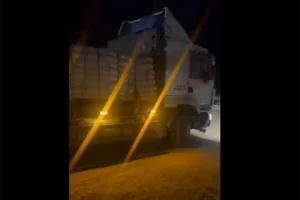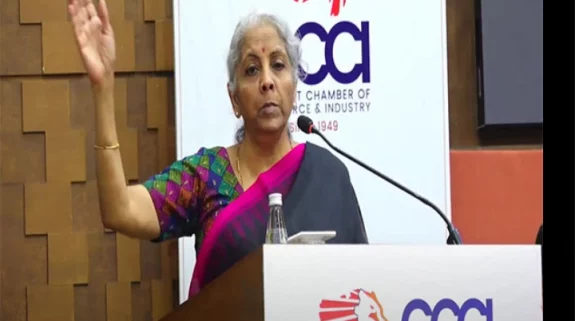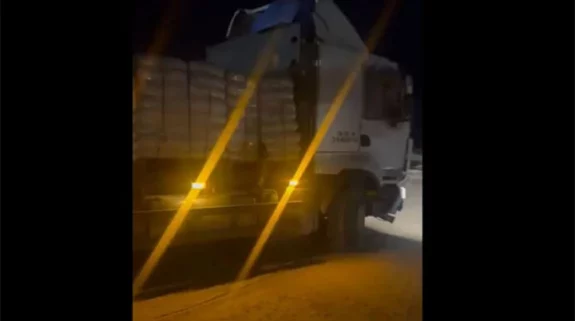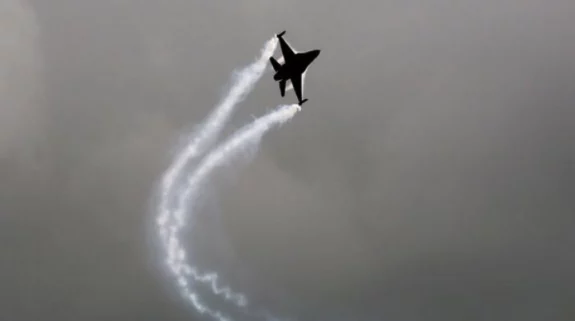Vadla is the most “famous” female crane among the common cranes who have been visiting India for the last two years. Like last year, this year too, Vadla, tagged with a transmitter (GPS), started her journey from her winter home in Nalsarovar wetland in Gujarat to her breeding home in Kazakhstan this year on March 29.
On April 4, Minister of Environment, Forests and Climate Change, Prakash Javadekar announced on social media, “Remember Vadla, the common crane. After spending nearly five months since October 10, at its wintering site near Nal Sarovar bird sanctuary near Ahmedabad in Gujarat, Vadla has moved over site in the mountains,125 km northwest Karachi and in the next few days it will travel through vast deserts of Pakistan, Balochistan, Turkmenistan before reaching its breeding ground in northern Kazakhstan.”
A female common #Crane 'Vadla' started on its migration once again to its breeding grounds, after spending nearly 5 months since 10 Oct 2020 at its wintering site near #Nal_Sarovar_Bird_Sanctuary. #migratorybirds (1/2) pic.twitter.com/aeJvHDjeDS
— MoEF&CC (@moefcc) April 4, 2021
After two days, Vadla with her flock of common cranes started her journey again from Karachi. Her last contact was monitored by scientists of Wildlife Institute of India (WII), Dehradun, and suddenly the contact was lost. The WII and Power Grid Corporation of India have been conducting research on Vadla.
“The signal stopped near Miani Hor in the Balochistan province of Pakistan. Miani Hor is a swampy lagoon in Lasbela district of Balochistan. It is a Ramsar designated wetland site located about 100 km from Karachi near Sonmiani Bay close to the Arabian sea. Even though it is remote, I was getting a good signal from the GPS tagged with the bird but suddenly it stopped for the last 5-6 days,” Dr Suresh Kumar, a senior scientist from the Endangered Species Management department in WII leading the project, told India Narrative.

Vadla, the famous crane with the GPS transmitter in her leg (Photo courtesy: Dr Suresh Kumar)
When asked what could have happened to the bird or the GPS transmitter, Dr Suresh said: “I am keeping my fingers crossed. Normally the flock does not stay at one place for more than 4-5 days. There are two possibilities. First, the bird became prey of some animals but it's highly unlikely because it's difficult for animals to catch these birds. Second, it may be killed by some poachers. In that area poaching of migratory birds is rampant. See, the solar powered transmitter can't switch off on its own, only me or my team can do that. I don’t know… I am praying. We have been working on this project for the last two years.”
In a first, the WII tracked the journey of a common crane from Gujarat to its breeding site in Northern Kazakhstan and back to Gujarat where it returned on World Migratory Bird Day (October 10, 2020).
A common crane named Vadla, migrated to a breeding site in Kazakhstan and then returned exactly to the site of her tagging in Gujarat on #WorldMigratoryBirdDay,10 Oct.
Isn't it amazing😯 and Kudos to Dr. @sureshwii and his team who tracked Vadla for a year#BirdsConnectOurWorld pic.twitter.com/O1mjlHILPE
— Prakash Javadekar (@PrakashJavdekar) October 13, 2020
Kumar said: “This project aims to understand the use of different landscapes by these migratory birds. It is important to note whether their roosting sites are in good shape along the flyway. Unlike some terrestrial species, migratory birds cannot be conserved only if one country conserves its habitat. The conservation of the flyway and roosting areas has to be consistent across the borders. Else, it will affect their migration pattern.”
Last year, on March 12, a female common crane weighing 4.72 kg was tagged with the GPS transmitter by the team. The bird was named ‘Vadla’ after the village near the Nalsarovar Ramsar site where she was tagged. The leg-mounted solar-powered GPS GSM tag attached to it weighed 40 grams.
The crane departed on its northward migration, travelling through Pakistan, Afghanistan, Iran, Turkmenistan and Uzbekistan before reaching its breeding ground in northern Kazakhstan near the border of Russia, covering about 5,000 km in 15 days. After a few months, Vadla started its southward journey in the last week of September and reached the same site following the same route on October 10 in 12 days.
The WII team logged the crane’s location every 6 hours. This was transmitted through the GSM network every day through the tracking period. Kumar explains: “the solar-powered GPS-GSM tag used on Vadla, is a smart technology. In situations where there was no GSM network, the data was stored in the tag and transmitted when the crane came into an area with the network. The tags can store 300,000 locations. That is a lot of location data.” He explains further, “our tracking study has already documented the nearly 10,000-km journey of this common crane from her wintering ground in Gujarat to her breeding ground in northern Kazakhstan and back and we are in the second leg of the project. I hope the bird is not killed by poachers,” Kumar says.

A flock of Common Cranes ready to take off (Photo: Mrityunjoy Kumar Jha)
According to Kumar, Pakistan and Afghanistan are located in the Central Asian Flyway of Migratory birds and poaching is a lucrative business in these countries. There is big money in hunting birds. Poachers selling cranes and other rare species can easily earn thousands of dollars. Poaching can not be ruled out. The recent shooting of two most endangered species, the Great Indian Bustard in Cholistan desert of Pakistan with the poachers led by a major of Pakistan army brazenly getting themselves photographed with the dead birds in their hands and guns on their shoulders has shocked the wildlife authorities.
Kumar's study includes the fact that high voltage transmission lines with vertical alignment are the biggest threat to the big birds like cranes. These cranes fly across these power lines as there are several reports of cranes and flamingos colliding with power lines and dying, which is a major issue.
In India, we have historically seen five species of cranes out of the fifteen found worldwide. Siberian cranes, common cranes (also called Eurasian cranes), and Demoiselle cranes are all winter visitors to India specially in Gujarat and Rajasthan. While the latter two still winter in India, their future is uncertain as they face numerous challenges. Siberian cranes are locally extinct in India. The last pair was seen at Bharatpur in 2002.






